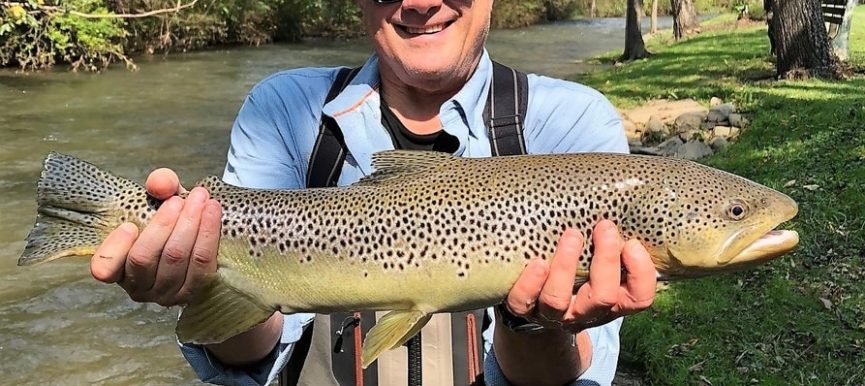Everyone is probably well aware of the unique weather and water circumstances that we have had in central PA this year. With the increased stream flows getting flies to the bottom has become increasingly difficult, and at the same time, essential for catching trout. The fish themselves are fine and dandy. They are content to live out these high water days tucked behind or beside bottom structure. The challenge from an angling standpoint is that delivering flies to where the fish are living is not as easy. Here are three ways to deliver flies down to the fish. Each has its own benefits and disadvantages based upon on-stream factors and skill level.
- Weighted Flies – We all use split shot, and it is a necessity when fishing nymphs. But sometimes weight that is built into the fly can be a big help when getting down in high water. This built-in weight can come from a variety of tying techniques. The oldest and probably most used is wrapping lead around the hook shank before tying the fly. Another easy way to add weight is with bead heads, especially tungsten bead heads. Tungsten is heavier than lead and is a great tool for sinking flies in high, fast water. The shop has a selection of tungsten bead flies from Performance Flies, well-tied patterns that get down quick.
- What’s below your indicator? – Most of us use indicators and store-bought, tapered leaders. This is all good, but when the water is high and pushy, it is important to think about the diameter of leader below the indicator. Small diameter tippet and leader sink faster than the butt section. To get down fast, try to keep the smaller diameter of the leader below the indicator, and lengthen tippet sections to gain the length needed below the indicator.
- Skip the indicator – This technique is for more advanced anglers. By fishing without an indicator and lifting fly line off the water, the drag or push that the water puts against the leader is reduced. Fishing a more tight line method (high stick, euro, Czech) it is possible to use the thin diameter of the tippet, and correct weight, to essentially slice down through the current to get down in some really fast water. There is a whole set of skills required to fish this way, but sometimes I have found this is the most effective way to get the flies down fast. Colored monofilament can be used in substitution of the bobber style indicator. This gives the angler a reference point for depth and strike detection.
Give these few tips a try next time you are in a high water situation and need to get those nymphs down to the bottom. If you need some help or are just curious about these techniques, the guides here at the club are well-versed in fishing in high flows and would be glad to help.

